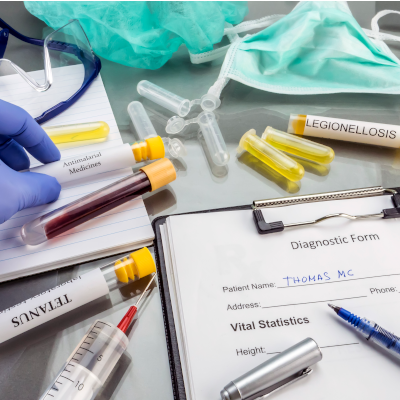It may seem daunting to implement the two standards within your local database for public health reporting, especially if you’re a team of one, but you can leverage the work of experts from the Centers for Disease Control (CDC) and the Public Health Information Network Vocabulary Access Distribution System (PHIN VADS). This resource can serve as an authoritative quality assurance measure to doublecheck your work, boosting your confidence level as well as that of your stakeholders (pathologists, epidemiologists and supervisors). 
While each state in the US may have varying disease requirements to report up the chain, PHIN VADS covers all of the requirements across the United States and has been vetted by the Council of State and Territorial Epidemiologists (CSTE). They’ve written four technical implementation guides based on bacterial, virus, and non-infectious disorders. Non-infectious guide includes pesticide exposure and parasitic infections.
Regardless of the particular state location being examined, you will find the Reportable Condition Mapping Table (RCMT) at PHIN VADS to be searchable. Released in 2016, the most recent update took place in September 2019. There’s a navigation spreadsheet, update report and sexually transmitted disease (STD) specific subset of lab tests and values in Excel format. The navigation spreadsheet has the RCMT VADS links tab with 253 conditions encoded to SNOMED CT (many in the disorder domain). The second tab, RCMT version 14.3, holds both Associated Lab Tests to those conditions in LOINC as well as Associated Lab Test Results in SNOMED CT for lab tests, lab values and findings for cancer registries. There are currently 11,173 entries on the RCMT Version 14.3 tab.
Before diving into this resource, you’ll want to have your local assays identified and mapped to LOINC with example answer formats. For a local laboratory, there are usually less than 100 assays that are required to be reported for public health. A reference laboratory would of course have more work to perform. There are many comprehensive LOINC terms covering all possible specimens and reporting formats if you’re thinking of starting from the LOINC database, it’s less “noise” to start with your local terms and map them to LOINC.
There was a recent publication regarding tuberculosis reporting between two agencies in the Ivory Coast (see reference below). Once the installation was complete, 22 case reports transmitted instantly between them. Previously, it had taken about a month for a report to be received because of the distance and workload between the two agencies. The paper stated that “this system representing the 1st version use a local codification that limits it to an interoperability with other environment that use a different code system. The use of a code system such as LOINC would allow full interoperability between different information systems.” The standardization effort is certainly worthwhile and PHIN VADS is a useful resource for you.
Reference:
Construction of an exchange interface for the transmission of laboratory results: a case of the National Tuberculosis Center.
Constant Joseph Koné, Ndri Nda Anatole Mian, Cataud Marius Guede, Man-Koumba Soumahoro. Pasteur Institute of Côte d’Ivoire, Epidemiology Unit.
Online Journal of Public Health Informatics.
Let us know if you have questions, if there are other topics you’d like to hear about, or if you’d like our help with terminologies and map sets!

